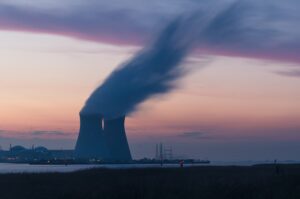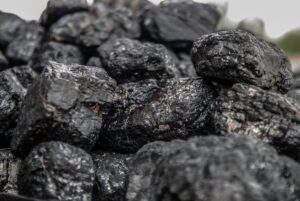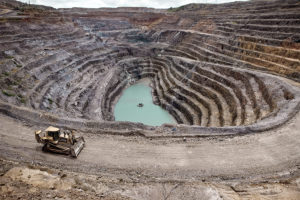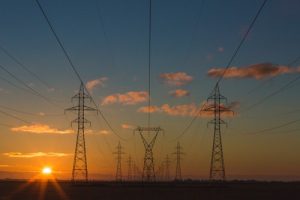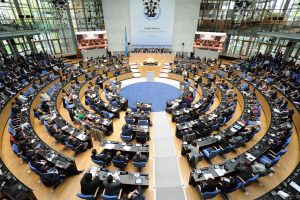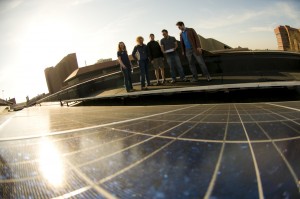8 item(s) were returned.
Resident Senior Fellow, Energy
R Street
There is an increasing disconnect between the sort of climate objectives that are advocated for politically (1.5 degrees Celsius, net-zero emissions by 2050, etc.) and the feasibility of achieving a massive global clean energy transition within the ever-shrinking carbon budget. This widening gap is reflected in seminal “transition scenarios” like the International Energy Agency’s (IEA) Net-Zero Emissions Report, or the International Renewable Energy Agency’s (IRENA) 1.5 Pathway report attempting to lay out a roadmap to these hoped-for climate objectives. The kicker is that these studies can’t make the math work without leaning heavily on huge amounts of carbon capture that… [more]
View InsightDirector of Global Nuclear Energy Strategy
Clean Air Task Force
Once again, the Atlantic hurricane season has demonstrated the impacts of climate change. Hurricane Ian made landfall in Florida as a category 4 storm in late September. It rapidly intensified to a “500-year flood event,” per Florida Governor Ron DeSantis, leveling communities, leaving millions without power, killing an untold number of people, and likely leaving behind billions of dollars in property damage. This follows a year of droughts, wildfires, and unrelenting heat. Clearly, the climate crisis is here. But we have answers to that crisis if we are willing to use them. Governments at all levels are already working towards… [more]
View InsightSenior Researcher
Ohio River Valley Institute
Rural Centralia, Washington, and surrounding Lewis County have long struggled economically. From 1998 to 2014 the county added no jobs. The town’s largest employer, a coal mine, which employed 600 workers, closed in 2006. And operations at its other major employer, a coal-fired power plant have been reduced by half as the plant works toward a planned retirement in 2025. As these events unfolded, they seemed like an economic death sentence to many in Centralia. But fate intervened. The mine’s and power plant’s owner, TransAlta Corporation, struck a deal with the state of Washington and environmental groups to fund an… [more]
View InsightIndustry leaders acknowledge that meeting decarbonization goals will require the use of every tool at their disposal. This will require government to work closely with the private sector to develop effective solutions. These public-private partnerships, such as the Energy Future Collaboration Partnership between the city of Denver and Xcel Energy, will be essential if ambitious objectives at the state and local levels are to be achieved. On January 13, OurEnergyPolicy hosted a webinar led by Susanne DesRoches (NYC Office of Resiliency and NYC Office of Sustainability) that examined the importance and potential of public-private partnerships to advance and support the… [more]
View InsightDirector, Payne Institute and Professor of Public Policy
Colorado School of Mines
In 2017, the Trump administration issued Executive Order 13817, which states “The United States is heavily reliant on imports of certain mineral commodities that are vital to the Nation’s security and economic prosperity. This dependency of the United States on foreign sources creates a strategic vulnerability…” Of the 35 critical minerals designated in a 2018 Department of Interior (DOI) report, the United States is 75-100% reliant on 24 of them. Many of these are essential inputs to clean energy technologies such as lithium-ion batteries, solar modules, and wind turbines. We can expect that the tremendous growth and innovation in resource-dependent… [more]
View InsightSenior Scientist
UFA Ventures, Inc.
In the United States, public debates surrounding energy policy focus on generation, carbon emissions, and cost. But all is for naught if the energy infrastructure that carries power isn’t appropriate for the changing energy mix or can’t keep up because it’s crumbling. With new technologies rising faster than sea level on a hot planet, the United States is in the midst of the biggest energy boom in 60 years. We have more natural gas, coal, and uranium than we need for several hundred years; new and better solar cells; new biofuel technologies to replace ethanol; and even more oil than… [more]
View InsightConsultant
Independent
The United States and world are facing a crisis of enormous magnitude if the global warming problem is not addressed properly. Every country in the world, except the current U.S. administration, supports the Paris climate agreement goal limiting the rise in global average surface temperature to 2°C (3.6°F). The consequences of failure could be a catastrophic future: Flooding from rising sea levels, more severe hurricanes/heat waves/wildfires, crop failures and droughts, and greater stress on an already aging infrastructure. Climate scientists generally agree carbon emissions should be reduced to near zero by mid-century to avert catastrophic global warming. But the voluntary… [more]
View InsightAssociate Professor of Sustainability Science and Policy
University of Vermont
Energy systems are in transition from predominantly centralized fossil-fuel and nuclear-based infrastructures to more efficient and heterogeneous renewable-based configurations that include a diversity of different kinds of decentralized, distributed energy. This energy transition is much more than a technological substitution; this transition also includes major social innovations including institutional and cultural changes related to expectations for how individuals, households, communities and organizations use and manage energy. The renewable energy transition also has huge potential to redistribute the political “power” associated with huge multi-national conventional energy companies. This political potential of the local, distributed, abundant, and renewable characteristics of renewable-based energy… [more]
View Insight
